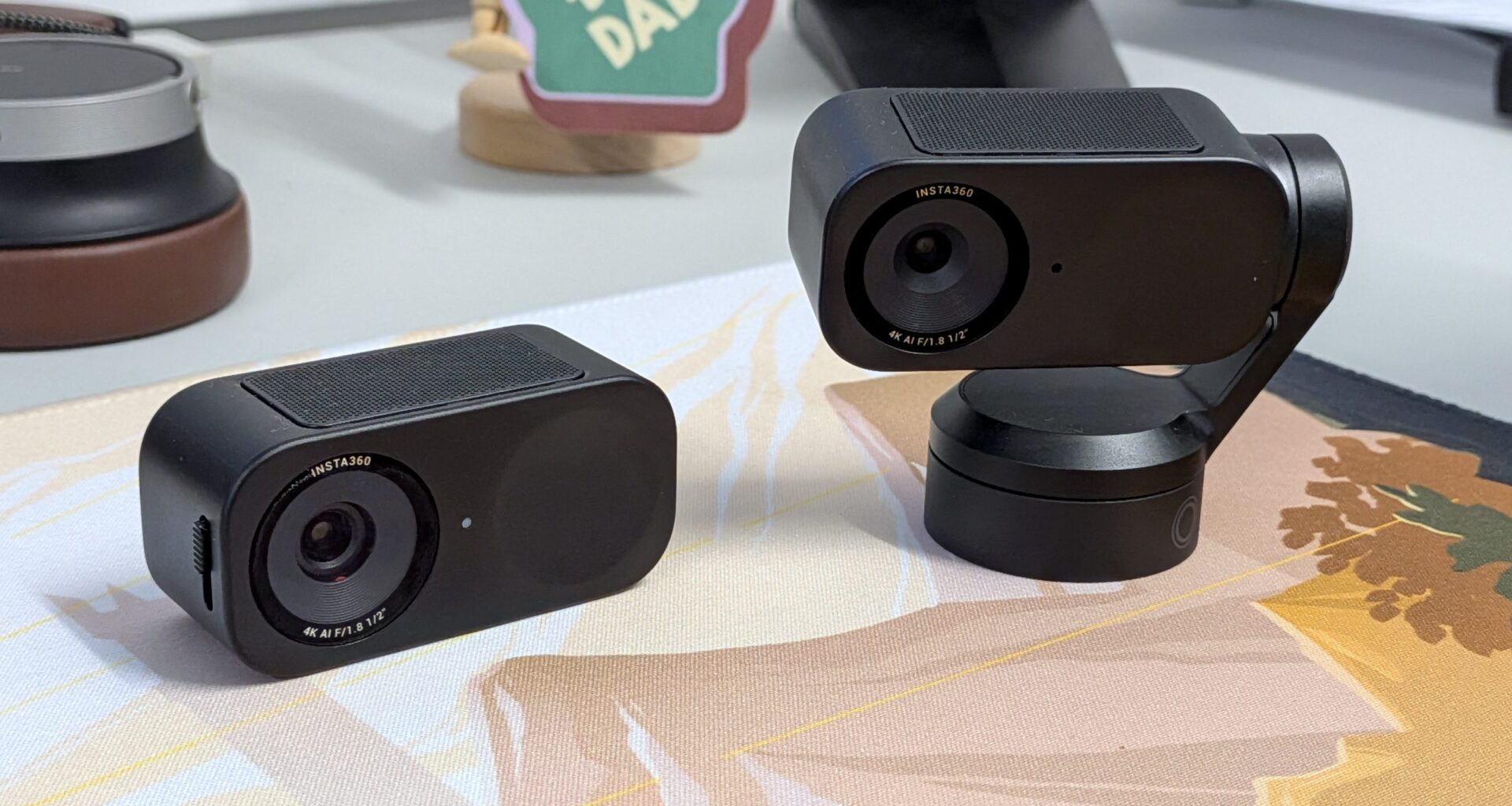I’ve been using both the Insta360 Link 2 and Link 2C mainly for Microsoft Teams, swapping them between my home desk and a portable setup. The short version is that both deliver clean, sharp 4K with fast autofocus and reliable exposure, and the software is genuinely useful rather than an afterthought. The longer version is that they feel like two different takes on the same idea: one for people who move while they present, one for people who sit down and get the job done.
Image quality is the easy win. The 1/2‑inch sensor on both cameras gives faces texture without pushing noise in low light, and HDR helps balance bright windows with darker corners so you don’t look like a silhouette. Autofocus locks quickly whether you lean forward or hold a product up to the lens—handy in Teams when you need to show a physical object without fumbling with exposure sliders. I didn’t need a ring light to look presentable, and colours out of the box are natural enough that I left the app’s controls mostly alone.
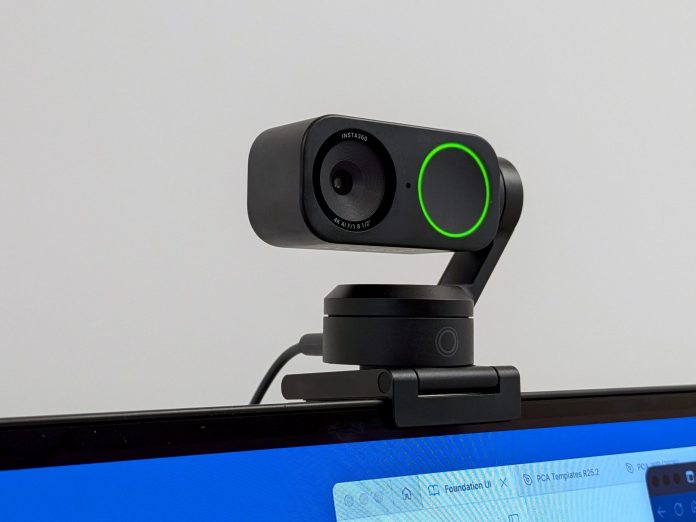
Audio is better than most built‑in laptop mics. The AI noise‑canceling modes—Voice Focus, Voice Suppression, and Music Balance—help tame keyboard clacks and low‑level office noise. In open‑plan calls, Voice Suppression made nearby chatter less distracting. It’s still not a replacement for a dedicated mic if you record content, but for daily meetings it’s more than fine. The Link Controller app is the other strength: it puts exposure, white balance, HDR, and framing right where you want them. Gesture control works for enabling tracking or whiteboard mode, though I wouldn’t rely on hand gestures to zoom mid‑call; it’s better as a quick toggle than a live production tool.
Where the two diverge is movement. The Link 2 has a 2‑axis gimbal that physically pans and tilts. If you stand up to present, write on a whiteboard, or move around a bit during a workshop, the tracking feels natural and keeps you framed smoothly. DeskView is genuinely useful—tap the mode and the camera tilts down to your desk, so you can show notes, sketches, or hardware without re‑mounting the webcam. The “pause‑track” fences are a neat touch; you can define areas where tracking stops, which prevents the camera from following someone walking behind you. In practice, that makes the Link 2 feel like a miniature camera operator for hybrid work.
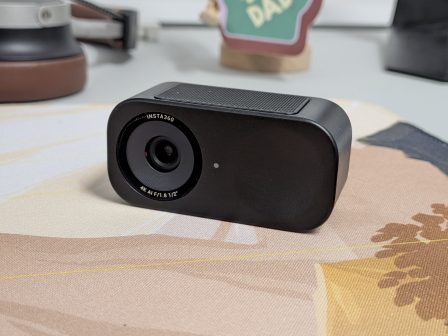
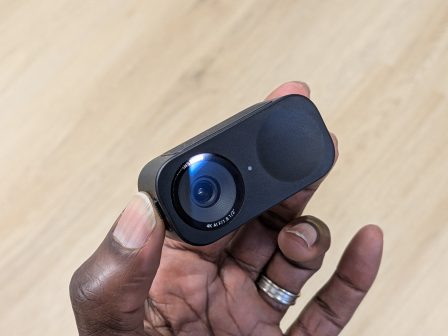
The Link 2C skips the gimbal and uses auto‑framing digitally. It’s smaller, lighter, and comes with a proper privacy shutter you can slide under the lens—no magnets or software switches—which matters when you step away from your desk and want guaranteed privacy. If your day is mostly seated calls, the 2C does 95% of what you need: crisp video, quick AF, reliable exposure, and a clean physical design that doesn’t dominate a laptop screen. Portrait mode is there for the occasional vertical shot, though you’ll adjust the mount and use the app to switch orientation.
I haven’t done proper streaming with them, but in testing across Zoom and Google Meet they behaved the same: sharp video, stable exposure, and tracking that copes with moderate movement. For an occasional YouTube Live or a training session, the Link 2’s DeskView and physical tracking feel more “production‑ready,” while the 2C is the compact pick that still looks premium on camera. If you live in vertical video, Obsbot Meet is a nice alternative because flipping into portrait is dead simple and the colours look a touch more filmic out of the box. Against Obsbot Tiny 2, the Link 2’s tracking feels smoother and less mechanical, and DeskView is faster to access; Tiny 2’s remote is handy, but the unit runs warmer and the motion has a slightly robotic look when it’s following you around.
Low‑light performance is solid for webcams. In a dim room with a single lamp, enabling HDR and nudging exposure in the app keeps skin tones believable without nuking highlights. The virtual background and bokeh features look cleaner than the stock blur in Teams or Meet, but they depend on your computer’s GPU and OS; on older hardware, I’d stick to simple background blur and call it a day.
Pricing and availability in Australia are clear on the official store right now. Link 2 is AU$247.99 for the Standard Bundle (AU$329.99 RRP) and AU$299.99 for the Tripod Bundle (AU$389.00 RRP). Link 2C starts at AU$165.99 during Big Deal Days (AU$249.99 RRP). For direct comparisons, Obsbot Tiny 2 typically sits around AU$599 in Australia, often dropping to AU$499 on promo, while Obsbot Meet 2 is roughly AU$229. That makes Link 2 the cheaper gimbaled 4K option versus Tiny 2, and positions Link 2C as the value 4K auto‑framing pick against Meet 2. If you won’t use physical tracking or DeskView regularly, save the money and get the 2C. If you will, the Link 2 earns its premium.
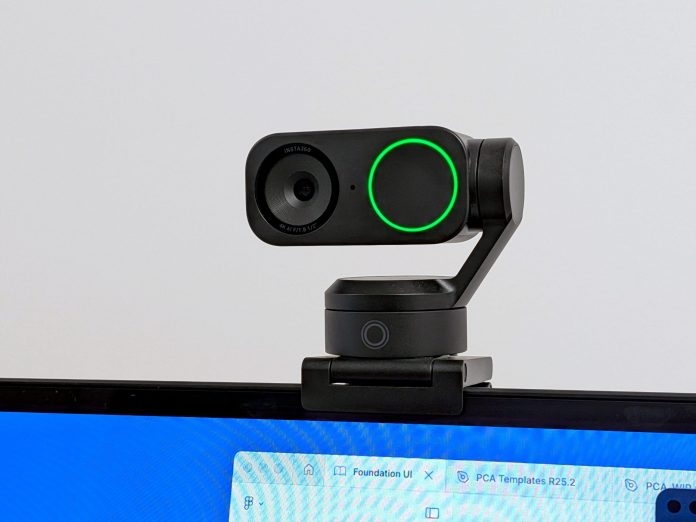
Verdict
After weeks of Teams calls, my takeaway is clear. If you present from different spots in the room, write on a board, or demo things at your desk, the Link 2 earns its premium: physical tracking, instant DeskView, and those pause‑track boundaries make a difference. If you sit and talk, need a clean design, and want a real privacy shutter, the Link 2C is the smarter buy. Both look meaningfully better than any built‑in laptop webcam, both focus quickly, and both keep exposure under control without babysitting. Pick based on how much you move during your workday; that’s the difference that counts.
Insta360 kindly provided the Link 2 and Link 2C to PowerUp for the purpose of this review
LIKES
Excellent 4K image
software is thorough & intuitive
Excellent AI tracking
Good microphones
Portrait mode for content creation
DISLIKE
Bulkier than OBSBOTs

